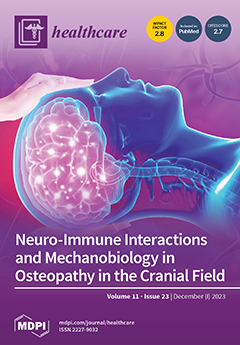Smartwatches are emerging as effective tools to promote exercise and physical activities in the healthcare industry. However, little is known about how smartwatch attributes facilitate exercise and for whom such attributes are more effective for exercise. Accordingly, the purpose of this study was to explore the structural relationship between smartwatch attributes, flow experience, and continued exercise intentions and to examine the moderating role of exercise involvement in the structural relationship. For this, a total of 600 participants were recruited via a professional survey firm in South Korea based on a multi-stage random sampling method and used for data analyses, including confirmatory factor analysis (CFA), structural equation modeling (SEM), and multi-group SEM. All survey items were adopted from the existing literature on healthcare, flow experience, and wearable device technologies. The results revealed that smartwatch attributes, including interactivity (γ = 0.234,
p < 0.001/γ = 0.235,
p < 0.001), autonomy (γ = 0.225,
p < 0.001/γ = 0.172,
p < 0.001), wearability (γ = 0.104,
p < 0.05/γ = 0.106,
p < 0.05), convenience (γ = 0.209,
p < 0.001/γ = 0.214,
p < 0.001), and experiential novelty (γ = 0.221,
p < 0.001/γ = 0.281,
p < 0.001) enhanced flow experience (absorption/enjoyment) during exercise. Furthermore, flow experience (absorption/enjoyment) was found to positively influence exercise intention (β = 0.511,
p < 0.001/β = 0.239,
p < 0.001). Lastly, exercise involvement was found to modulate the structural relationships among smartwatch attributes, flow experience, and exercise intention (∆χ
2 = 23.231, ∆
df = 12,
p < 0.05). By investigating these dynamics, this study contributes to shared knowledge not only in the healthcare literature but also in the wearable-technology literature. The results of the current study also provide useful guidelines for practitioners in the wearable-device and healthcare industries to develop optimal features of smartwatches for exercise and physical activities.
Full article






